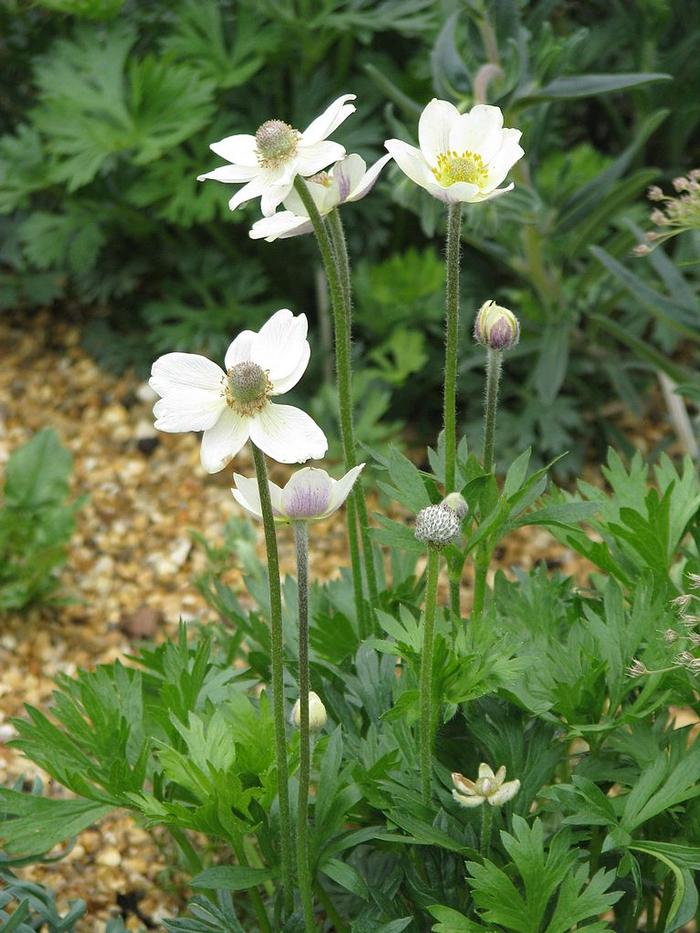General Description
Bloom Description: The blooms consist of five white to creamy, petal-like sepals that sand on slender, erect, and very hairy stems. The blooms occur in spring and summer, and the plants will often bloom twice if dead-headed.
Growth Habit & Shape: The species is reputedly aggressive in some portions of its range, but in New England soils this cultivar is comparatively well-behaved, forming slowly-broadening clumps over time.
Soil Preferences: Thrives in gritty, well-draining, mostly dry soils, and survives a broad range of soil acidities in spite of the natural species's preference for alkaline conditions.
Root Description: The roots are shallowly rhizomatous.
Garden Uses: Cut-leaved windflower works well near the front of mixed plantings in full sun; its hairy stems and finely cut foliage provide beautiful contrast against more broad-leaved, glossy plants. Consider use in tough, gravely, droughty spots for a touch of alpine style.
Best Management & Maintenance: After flowering and once seed heads begin to develop, cut back flowering stems to induce a second flowering later in the season. Dead-head prior to seed dispersal to control dispersal.
Common Problems: This cultivar is susceptible to root rot and dieback in excessively moist, ill-draining soils, or in locations with insufficient sun.
Benefits
Ornamental Benefits: This is an excellent accent plant with interesting foliage and a lovely, classic-looking bloom. When well-established, this species will bear large, bulbous seed heads reminiscent of unripe wild strawberries, bringing further visual interest as the season presses on.
References
Return to Top

